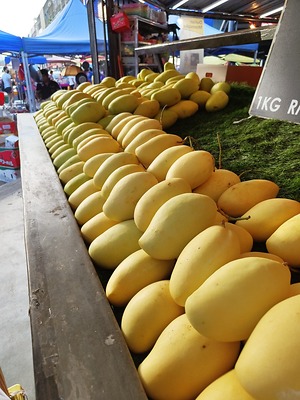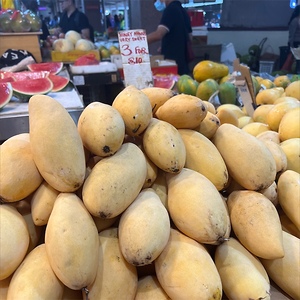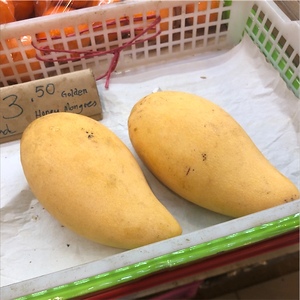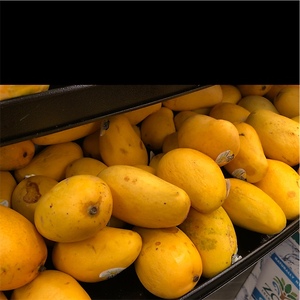

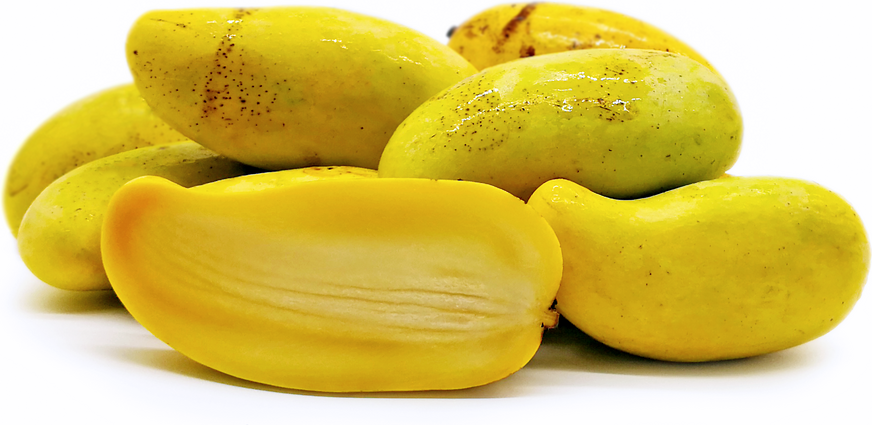
Honey Kidney Mangoes
Estimated Inventory, lb : 0
Description/Taste
Honey Kidney mangoes are unusually small in size, growing to about 5 centimeters in diameter and 12 centimeters in length. Each weighs around 100 grams. They are oblong, oval, and semi-flattened in shape with a distinct beak at one end. The thin skin is smooth and ripens to yellow with green blush. Each fruit has a soft, very flat inner stone. The inner flesh is juicy, tender, velvety, and less fibrous than other mango varieties. Honey Kidney mangoes have an aromatic, tropical scent. They have a sweet and sour flavor with notes of honey.
Seasons/Availability
Honey Kidney mangoes are available in the spring months.
Current Facts
Honey Kidney mangoes are botanically classified as Mangifera indica. They are a relatively rare mango found in Thailand, where as many as 200 distinct varieties, and many more hybrids and crosses, are said to exist. Many Thai mangoes are highly flavored and valued for their unique taste.
Nutritional Value
Honey mangoes are a good source of fiber and vitamins A, C, E, and B, and also contain potassium, iron, calcium, and natural enzymes that help with digestion.
Applications
Honey Kidney mangoes are best suited for raw applications as their tender flesh and sweet flavor are showcased when consumed fresh, out-of-hand. The flesh can be chopped and added to salsa to serve over fish, cubed and mixed into green salads and fruit salads, and mixed into yogurt. Honey mangoes are also incorporated into smoothies, shakes, cocktails, and desserts. Store Honey Kidney mangoes for one week at room temperature. They can be stored in the refrigerator where they be good for several weeks.
Ethnic/Cultural Info
Mangoes are extremely popular in Thailand, where festivals are held in honor of the fruit.
Geography/History
The exact origins of Honey Kidney mangoes are unknown. However, mangoes have been cultivated in Southeast Asia for thousands of years. In Thailand, mangoes are grown widely both commercially and as a household crop. Of late, there has been a resurgence in curiosity for ancient varieties.



